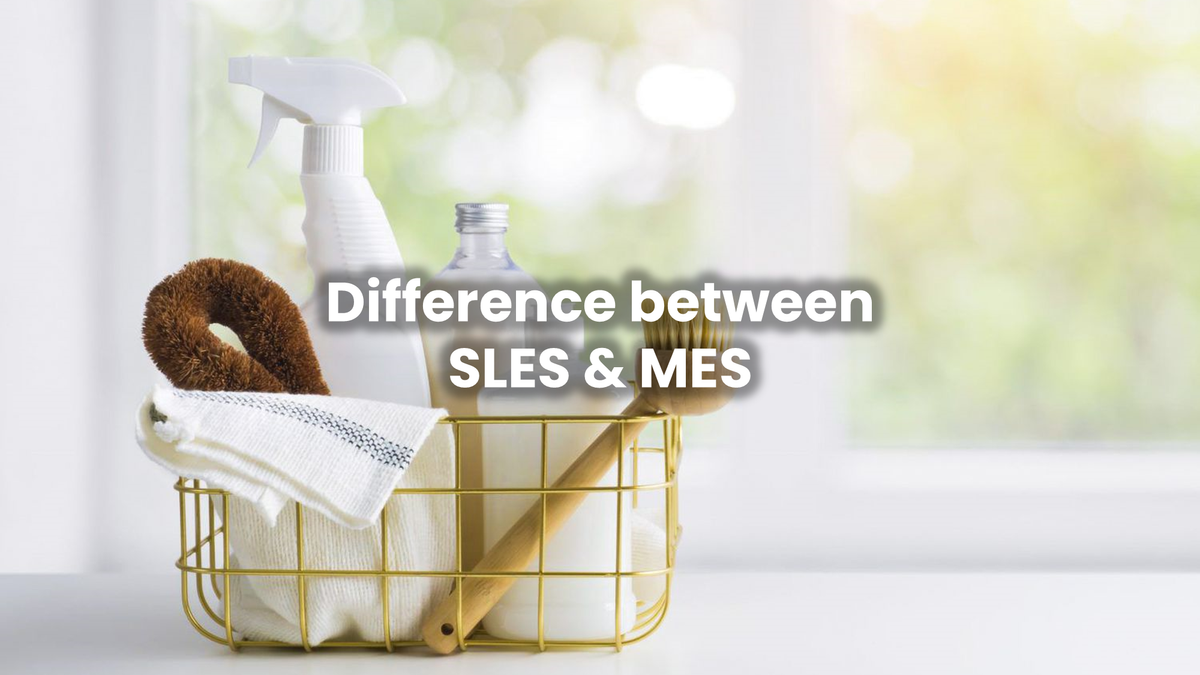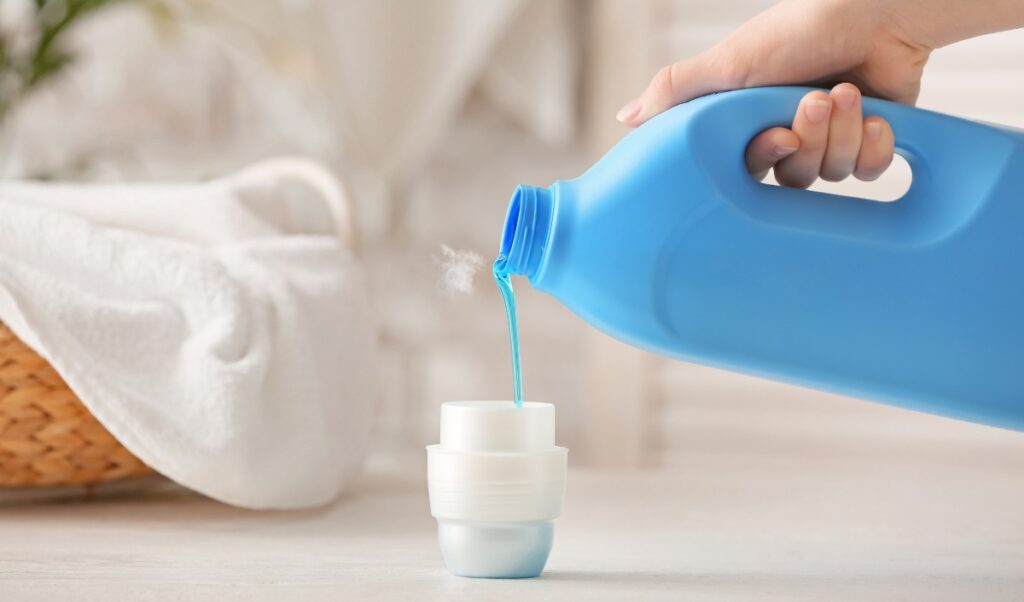
In the world of chemical raw materials, especially in cleaning, personal care, and detergent industries, surfactants play a key role. Two of the most commonly used surfactants are Sodium Lauryl Ether Sulfate (SLES) and Methyl Ester Sulfonate (MES). Both are used for similar purposes, mainly as cleaning agents. They are very different in terms of structure, performance, cost, and environmental impact.
This article explains the key differences between SLES and MES to help manufacturers, formulators, and buyers make better-informed decisions.
What Are Surfactants?
Before we compare SLES and MES, let’s understand what surfactants are.
Surfactants (short for “surface-active agents”) are chemicals that reduce the surface tension between liquids or between a liquid and a solid. They help in mixing oil and water, removing dirt, and creating foam. Surfactants are essential in many industries, including:
- Personal care (shampoo, body wash)
- Household cleaning (laundry detergents, dishwashing liquid)
- Industrial cleaning
- Cosmetics
- Agriculture
There are different types of surfactants: anionic, non-ionic, cationic, and amphoteric. Both SLES and MES are anionic surfactants, meaning they carry a negative charge in solution.
What Is Sodium Lauryl Ether Sulfate (SLES)?

SLES is a widely used synthetic surfactant. It is made by ethoxylating lauryl alcohol and then sulfating the product. The most common version used in products is SLES 70%, which is diluted to lower concentrations during manufacturing.
- Chemical Structure: R-(OCH2CH2)n-OSO3Na (where n = number of ethylene oxide groups, usually 2 or 3)
- Appearance: Clear or slightly yellow gelatinous gel
- Solubility: Highly soluble in water
- Foam Quality: High foaming
- Common Applications: Shampoos, toothpaste, hand wash, body wash, dishwashing liquids
What Is Methyl Ester Sulfonate (MES)?
MES is a newer, more environmentally friendly surfactant derived from natural oils such as palm oil or coconut oil. It is produced by sulfonating methyl esters of fatty acids.
- Chemical Structure: R-COOCH3-SO3Na
- Appearance: Off-white flakes
- Solubility: Moderately soluble in water, better in warm water
- Foam Quality: Good foam, stable in hard water
- Common Applications: Laundry detergents, powder detergents, cleaning products
Key Differences between SLES and MES
Let’s break down the differences in more detail:
1. Raw Material Source
- SLES: Derived from petrochemical-based alcohols (synthetic origin)
- MES: Derived from natural vegetable oils like palm oil (renewable origin)
Why it matters: MES is more sustainable and biodegradable due to its natural origin. This is important for companies aiming for greener formulations.
2. Environmental Impact
- SLES: Biodegradable but contains ethylene oxide residues and can release 1,4-dioxane, a possible carcinogen, if not processed correctly.
- MES: Highly biodegradable, low toxicity, and environmentally safer
Example: Many brands shifting to “green” labels prefer MES over SLES to meet eco-label certification.
3. Performance in Hard Water
- SLES: Performance decreases in hard water due to calcium and magnesium ions which reduce foaming.
- MES: Better performance in hard water, maintains foam and cleaning ability.
Why it matters: In areas with hard water with high mineral content, MES can offer superior results, especially in laundry applications.
4. Foam Quality and Stability
- SLES: Excellent foaming agent, produces rich lather.
- MES: Moderate to good foam, but more stable in presence of soil and hard water.
Insight: For products where rich foam is important like shampoos, SLES may be preferred. For detergents and soaps where foam stability is key, MES works better.
5. Skin Irritation and Safety
- SLES: May cause irritation to sensitive skin, especially if not properly.
- MES: Generally milder and safer for skin due to its natural origin.
Question: Are your products designed for sensitive skin or eco-conscious customers? MES may be the safer choice.
6. Solubility and Formulation Ease
- SLES: Highly soluble in water, easy to use in liquid formulations.
- MES: Lower solubility, more suited to powder or solid formulations, but new liquid forms are being developed.
Formulation tip: MES may need additional dispersing agents or warm water during mixing.
7. Cost and Availability
- SLES: Generally cheaper and widely available globally.
- MES: Slightly higher cost due to natural raw materials and production process, but prices are becoming more competitive.
Industry note: Cost difference is narrowing as demand for green surfactants increases.
8. Applications and Best Use Cases
Application | Best Option | Reason |
Shampoo / Body Wash | SLES | High foam, low cost |
Laundry Detergent | MES | Better cleaning in hard water, eco-friendly |
Dishwashing Liquid | SLES | High foaming |
Baby Products | MES | Milder on skin |
Eco-Friendly Detergents | MES | Natural origin, biodegradable |
Should You Choose SLES or MES?
It depends on your product goals:
- Choose SLES if you need high foam, cost-effectiveness, and easy formulation for personal care or cleaning products.
- Choose MES if you are targeting eco-friendly, biodegradable, and mild formulations, especially in laundry and baby care.
Think about your target market, regulations, and performance requirements.
Future Trends: Is MES Replacing SLES?
MES is growing fast, especially in regions where:
- Environmental regulations are getting stricter
- Green chemistry and sustainability are key trends
- Consumers demand safer, plant-based products
However, SLES still holds a strong position in the market due to its low cost and high performance in specific applications.
Conclusion: Making the Right Choice
Both SLES and MES are powerful surfactants with different strengths. Understanding their chemical structure, properties, and performance can help you choose the right ingredient for your formulation, meet consumer expectation, align with environmental goals and optimize cost vs performance. Whether you're developing a new detergent line, improving an existing shampoo, or exploring greener alternatives, knowing the difference between SLES and MES is essential.
